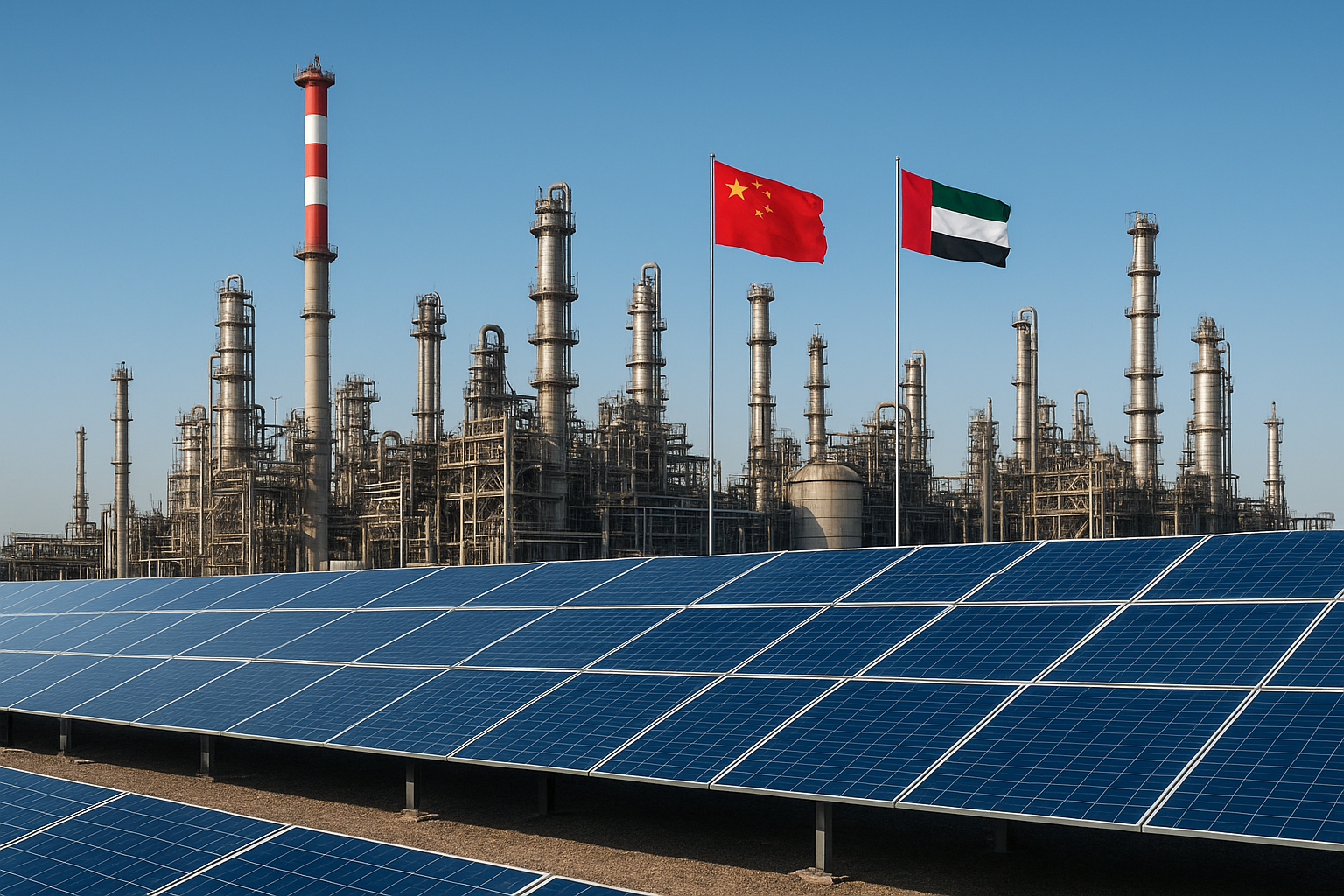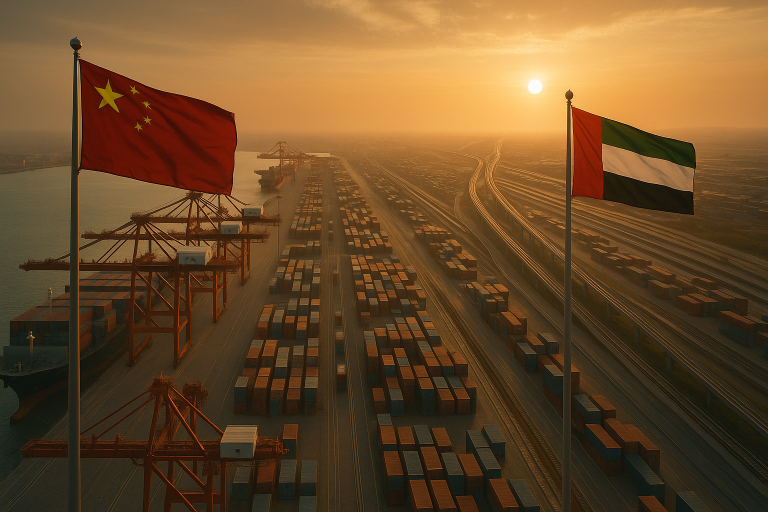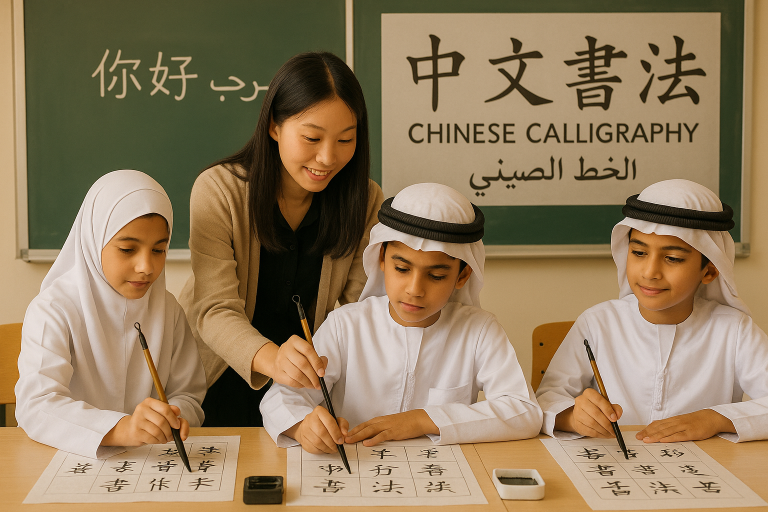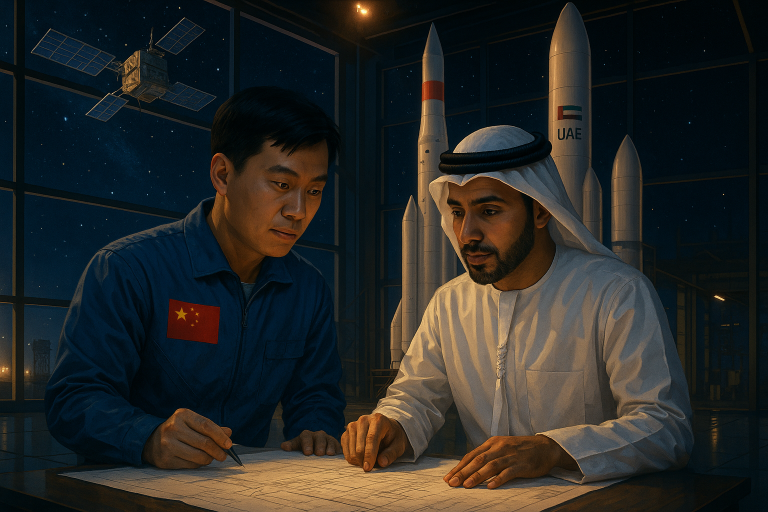Energy Cooperation Excellence: Powering Sustainable Development
Introduction
The energy partnership between the People’s Republic of China and the United Arab Emirates is a powerful narrative of strategic evolution. It has transformed from a conventional relationship, defined by the simple exchange of hydrocarbons, into a comprehensive and forward-thinking alliance aimed at ensuring mutual energy security while simultaneously leading the global transition to a sustainable future. This collaboration represents a unique and exemplary model of how one of the world’s largest energy consumers and one of its most significant energy producers can forge a partnership that addresses both present needs and future challenges. The China-UAE energy alliance is a story of synergy, where the stability of traditional energy trade provides the foundation for ambitious joint ventures in renewable power, clean technology, and the innovations that will define the next generation of energy. This article explores the multifaceted dimensions of this energy cooperation, from its bedrock in the oil and gas trade to its pioneering role in the green transition and its shared vision for a sustainable and prosperous future.
The Bedrock of Partnership: A Strategic Oil and Gas Trade
For decades, the oil and gas trade has been the unshakable foundation of the China-UAE economic relationship. The UAE has consistently been a stable and reliable supplier of crude oil to China, playing a crucial role in fueling the nation’s rapid economic growth and enhancing its energy security. In 2024 alone, the UAE was China’s sixth-largest source of crude oil imports, a testament to the scale and importance of this trade [1]. This relationship is built on a deep understanding of mutual needs, providing China with a secure energy supply and the UAE with a dependable, long-term market for its primary export.
The cooperation, however, extends far beyond simple trade. Chinese national oil companies have made significant inroads into the UAE’s upstream sector, acquiring stakes in major onshore and offshore concessions. These investments are not merely financial; they involve deep technical collaboration and knowledge sharing, bringing Chinese technology and expertise into the UAE’s world-class energy industry. Reciprocally, Emirati firms have invested in China’s downstream sector, participating in refining and petrochemical projects. This two-way investment has created a deeply integrated energy value chain, strengthening the bonds of the partnership and ensuring that both nations have a stake in each other’s success.
Pioneering the Green Transition: A Shared Commitment to Renewables
While grounded in traditional energy, the most dynamic aspect of the China-UAE energy partnership is its shared and ambitious commitment to leading the global green transition. This collaboration is a direct reflection of both countries’ national strategies. The UAE’s “Net Zero by 2050” strategic initiative and China’s pledge to achieve carbon neutrality by 2060 have created a powerful alignment of purpose. Together, they are making massive investments and driving innovation in renewable energy.
Case Study: The Al Dhafra Solar PV Project
A monumental symbol of this green partnership is the Al Dhafra Solar PV Project in Abu Dhabi. As one of the world’s largest single-site solar power plants, it stands as a testament to what international cooperation can achieve. The project brought together the expertise of the UAE’s renewable energy champion, Masdar, with Chinese partners who provided cutting-edge solar technology and construction services. The result is a landmark project that generates enough clean electricity to power approximately 200,000 homes and displaces over 2.4 million tonnes of carbon emissions annually. It is a powerful showcase of how Chinese technology and Emirati project management can combine to deliver world-leading clean energy solutions at scale.
The ambition of the partnership extends beyond solar. Both countries are actively exploring joint ventures in other clean energy frontiers, most notably green hydrogen. As the world seeks new ways to decarbonize heavy industry and transport, China and the UAE are positioning themselves at the forefront of the emerging hydrogen economy, collaborating on production technologies, storage solutions, and the establishment of international supply chains.
Technology and Innovation: Driving the Future of Energy
At the heart of the China-UAE energy alliance is a focus on technology and innovation. The partnership is a conduit for significant technology transfer and joint research and development. In the traditional energy sector, this includes collaboration on advanced techniques like enhanced oil recovery (EOR) and carbon capture, utilization, and storage (CCUS), which aim to make the production of oil and gas more efficient and less carbon-intensive. In the renewable sector, the focus is on developing next-generation solar panel technology, advanced energy storage solutions, and smart grid management.
The digitalization of the energy sector is another key area of cooperation. Both countries are leveraging artificial intelligence (AI), big data, and the Internet of Things (IoT) to optimize energy production, reduce waste, and enhance the resilience of their power grids. This fusion of energy and technology is creating a more efficient, intelligent, and sustainable energy system for both nations.
The Future of Energy Cooperation: A Greener, More Secure Horizon
Looking to the future, the China-UAE energy partnership is set to deepen its focus on sustainability and innovation. The roadmap includes further large-scale renewable energy projects, joint investments across the clean energy supply chain—from manufacturing solar panels to producing green hydrogen—and a greater emphasis on green finance to fund these ambitious initiatives. Beyond their bilateral cooperation, China and the UAE are increasingly positioned to work together to promote stability in global energy markets and advocate for a just and orderly energy transition on the international stage. Their combined influence as a major producer and a major consumer gives them a unique and powerful voice in shaping the future of global energy governance.
In this context, the UAE China Chamber of Commerce (UECN) is a vital enabler. It connects energy companies, technology providers, and financial institutions, helping them to forge the partnerships needed to capitalize on the vast opportunities in both the traditional and renewable energy sectors. The Chamber provides the platform for businesses to align with the strategic vision of the two governments and to drive the next phase of energy cooperation.
Conclusion: A Partnership that Powers the World
The energy alliance between China and the UAE is a paradigm of modern international cooperation. It masterfully balances the present-day need for energy security with the urgent global imperative of a transition to a sustainable future. The partnership’s dual strengths—a stable and deeply integrated relationship in traditional energy, combined with a dynamic and pioneering collaboration in renewables and clean technology—make it uniquely resilient and forward-looking. This is a partnership built not just on trade, but on a shared commitment to innovation, economic prosperity, and environmental stewardship. As it continues to evolve, the China-UAE energy partnership serves as a powerful example of how international cooperation can accelerate the global energy transition and help build a cleaner, more secure, and more prosperous world for all.
References
[1] Ministry of Foreign Affairs of the People’s Republic of China. (n.d.). UAE (United Arab Emirates). Retrieved from https://www.fmprc.gov.cn/eng/gjhdq_665435/2675_665437/2903_663806/







